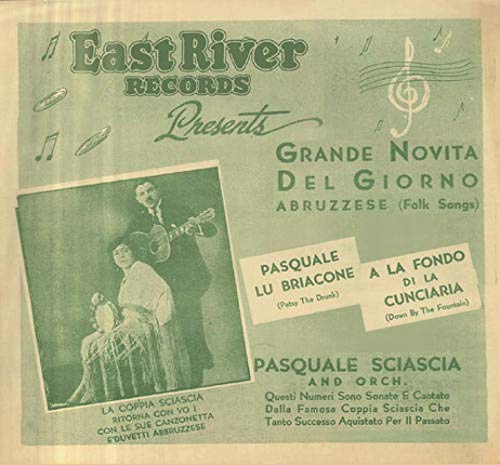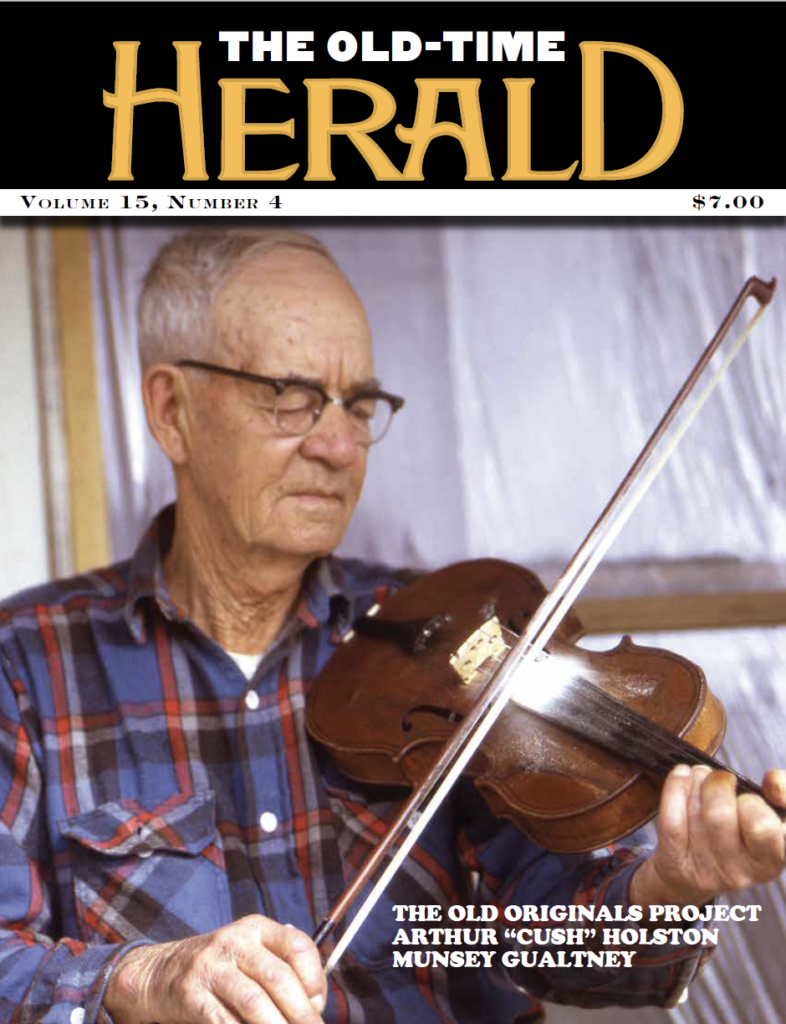
Geography, it’s been said, is destiny. That explains why the music of émigrés to early 20th century America was recorded long before that of long-rooted communities in the South: the center of commercial recording was New York City. The nascent recording industry quickly discovered it could turn modest profits from records marketed to even fairly small immigrant communities, and did a healthy trade with large ones. Italians were prime targets, since three million Italians had immigrated to America between 1900 and 1915.
Among them were Pasquale Sciascia and his wife Chiarina. They were from Abruzzo, a region producer Todd Cambio describes as “isolated and wild,” its people “strong and self-reliant.” Many Abruzzese settled in Philadelphia, where the Sciascias became popular entertainers. This led to their recording 44 sides for Victor, Brunswick, and Columbia between 1927 and 1933. They were, Cambio writes, “the best selling Abruzzese artists of their time,” producing recordings that “captured some very old Italian folk songs for the first time.”
14 of their recordings are collected here in a set that includes a 24-page booklet offering lyrics in Italian with English translations, song commentary, recording dates, photos, and a biography of the Sciascias. (The playing time is 44:03.) This is an obvious labor of love, and there’s no not admiring the painstaking dedication that went into creating this. However, it’s not certain lovers of vernacular music will share the producer’s sense of this music’s earthiness or his enthusiasm for it. The Sciascias’ vocal duets are charming, if less than subtle in their comic theatricality. Chiarina’s background in theater and opera shows, and whether that’s a plus or minus may be in the beholder’s ear. The band accompaniments, featuring violin, flute and sometimes accordion, are stagy sounding. (Dare I call them corny?) The few songs with just guitar and mandolin accompaniment fall easiest on ears seeking folk music. Most of the songs are relentlessly upbeat, and may lead the uninitiated listener to feel as though a series of variants of “Funiculì, Funiculà” is being played.
The cause of Italian music recorded in early 20th century America might be better served by an overview compilation in which the Sciascias are included alongside a variety of other artists and approaches. It’s certainly something producer Todd Cambio could do, based on the recordings he shared from his collection on the January 1, 2020, edition of John’s Old Time Radio Show, John being the executive producer of this set. He aired a wonderful a cappella lullaby by Carolina Voccia as well as some stunning instrumental performances that would surely hit the mark with fans of vernacular music. Here’s hoping there’s a collection of that kind in our future.

Leave a Reply